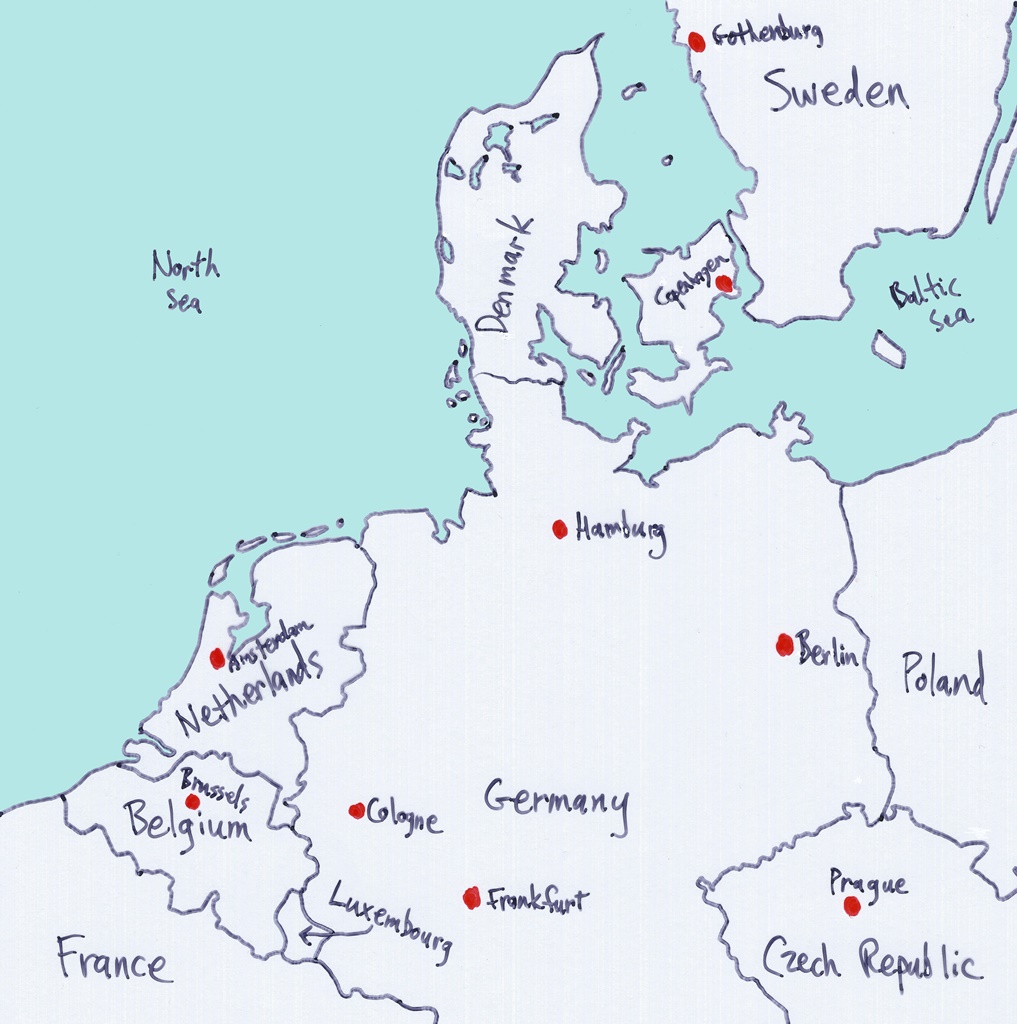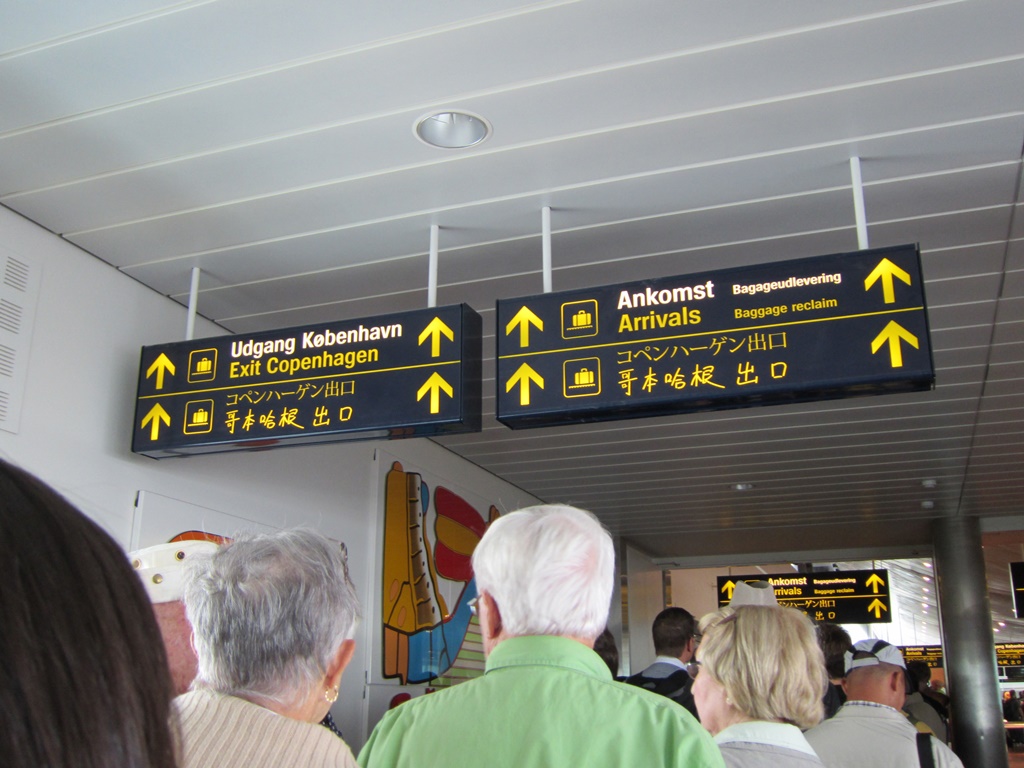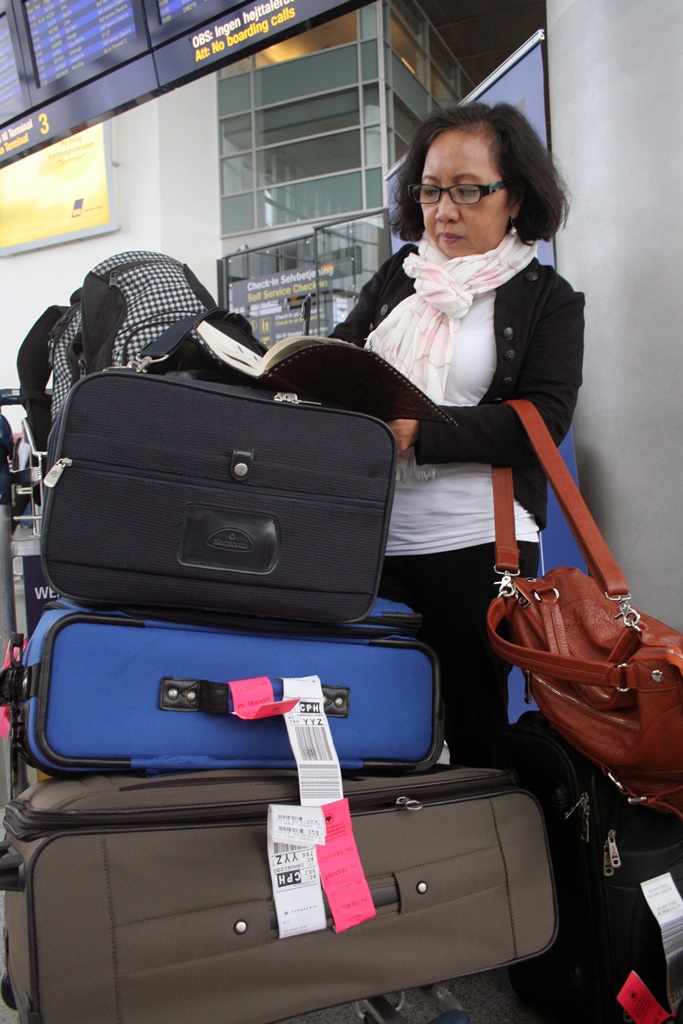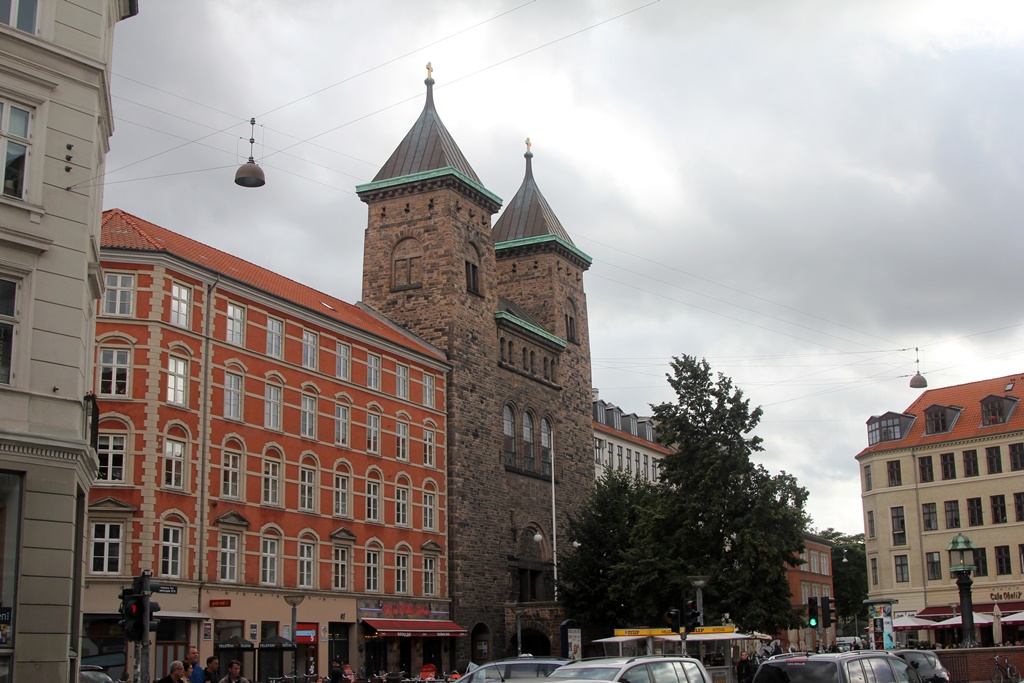Northern Europe
Denmark is the country that protrudes northward into the sea from the coast of Germany. Or rather northward into the seas,
as it roughly separates the North Sea on the west from the Baltic Sea on the east. Evidence of habitation dates back to
the end of the last big Ice Age, around 13,000 years ago. At this time Denmark was a more or less contiguous land mass,
but warmer temperatures caused the sea level to rise, and the territory was broken up into a peninsula (now known as
Jutland) and many islands, mainly to the east of the peninsula. There is evidence of Iron Age Danes, and eventually
of Danes who traded with Romans. The Viking Age began in the 8th Century A.D., when seafaring natives of Denmark and
Norway raided and conquered much of western Europe, including Britain and Ireland and a section of France which came to be
called Normandy. The Vikings worshipped the Norse gods, including some known to followers of the Avengers, such as
Odin, Thor and Loki. During battles, female figures known as Valkyries were thought to decide who would live and
who would die, and took half of the latter group with them to an afterlife kingdom known as Valhalla, ruled by Odin.
But the Viking fun and games began to wind down with the Christianization of the Danes in the year 965. Over the ensuing
centuries there were several disputes among Denmark and its neighbors, including Sweden, the Germanic States and the Netherlands, and
pieces of territory were repeatedly wrested by one party from another. In the 12th Century a village on the east coast of
the largest Danish island (an island known as Zealand) was fortified with a castle and became the town of
Copenhagen. Copenhagen eventually became the country’s capital city, in the 15th Century.

Zealand and Copenhagen
In the 16th Century, Denmark was introduced to Protestantism by an associate of Martin Luther, a Danish monk named Hans
Tausen, and the ideas (including services in Danish instead of Latin) proved to be very popular. Turmoil resulted, including
a three-year civil war, but Denmark emerged from the conflict as a Protestant country. A century later, Denmark joined the
Thirty Year’s War on the Protestant side and ended up losing much of its influence when the Catholics were eventually
victorious. But Protestantism in northern Europe ended up being something that could not be contained by force.
During the Napoleonic Wars, in 1801 and again in 1807 the city of Copenhagen was attacked twice by the British to keep their
fleet and other resources from becoming of use to the French. The 1807 battle was particularly calamitous, as 2000 civilians
lost their lives and much of the city was destroyed. The British also made off with the Danish fleet during this battle.
During World War II, Denmark was occupied by the Nazis but managed to escape much of the wholesale destruction wrought
elsewhere. The Nazis started to deport Jews in 1943, but many were able to escape to neutral Sweden.
Present-day Denmark is a constitutional monarchy, with a largely ceremonial royal family that can trace its lineage all the way
back to the 10th Century Viking king Gorm the Old. This makes the Danish monarchy the oldest in Europe. The current monarch
is Queen Margrethe II, who has reigned since 1972. The legislature is called the Folketing, and is big on social
services. As a result taxes are very high - we were to find Copenhagen quite an expensive town to visit.
But first we had to get there. On this trip, Nella and I were joined by our daughter Connie. Our son Philip was with us in
spirit, but was unable to get away from work for the necessary duration. He was able to drive us to the airport, though.
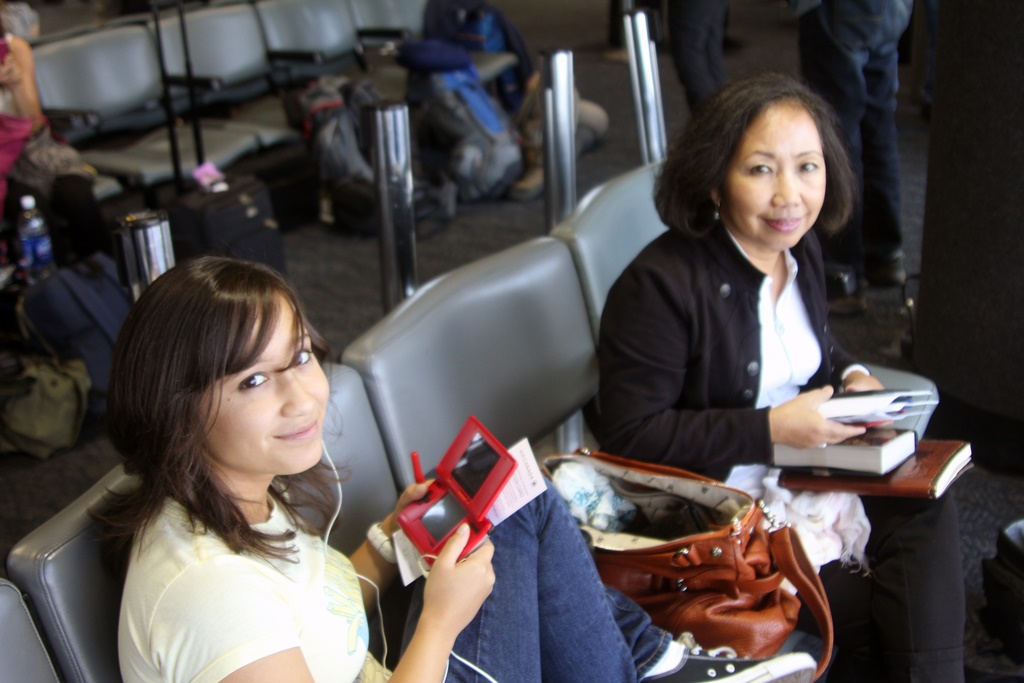
Connie and Nella at LAX

Waiting at Gate 26
We caught an Air Canada flight that took us to Toronto, and then another that eventually landed us at Copenhagen’s
Kastrup Airport, where it was early afternoon. The signs at the airport made it clear that we were now in a place
where something very different was spoken.
Welcome to Denmark
Before the trip I’d made a brief attempt at learning some Danish, but immediately ran into some things that I found
disturbing. Danish is considered a Germanic language, and maybe there is a lot of commonality with German, but I never
got into it enough to find out. Danish pronunciation seemed very foreign to me. For instance, the Danish name for
Copenhagen is spelled København, and is pronounced something like “Köbenhown” (rhymes with town). I found myself
yelling at words, “You couldn’t possibly be pronounced that way!”, and eventually gave up to keep my head from
exploding. The knowledge that most Copenhagen residents speak at least some English also served to reduce my
motivation.
From the airport there is a train that goes to the city’s central station, which is located near our hotel. Nella and
Connie waited with our pile of luggage while I found tickets, and the vendor spoke English, as advertised.
Nella Guarding Luggage
The train dropped us off at the station, where we discovered that bicycle transportation is extremely popular in
Copenhagen. Apparently a lot of commuters ride their bikes to the station and leave them there while they catch
trains to wherever they need to go.

Inside the Train Station
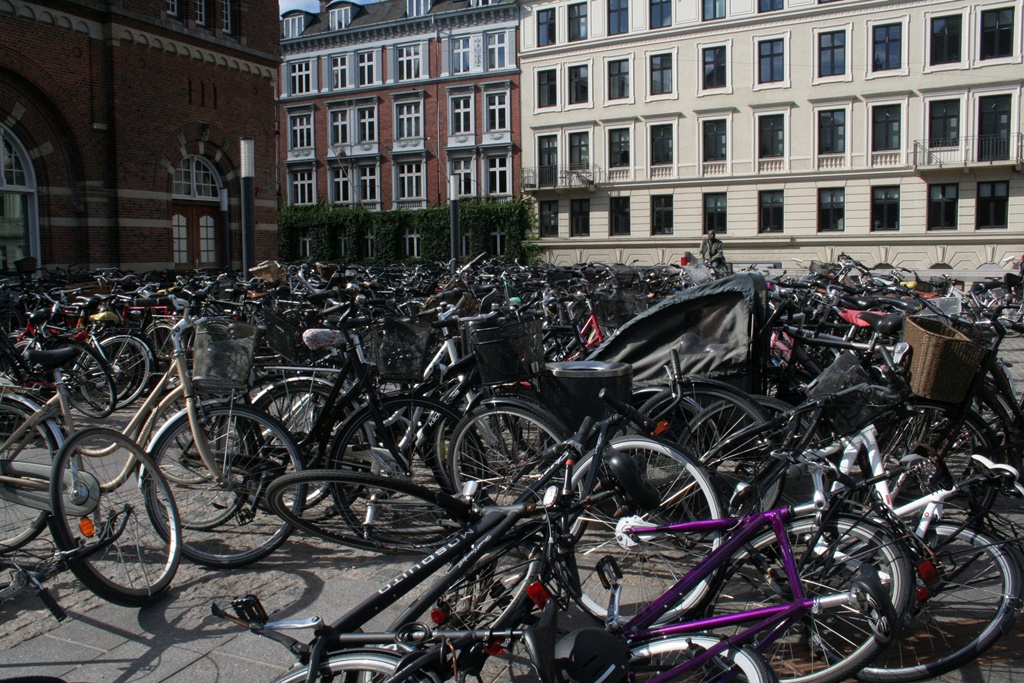
BikesBikesBikes
We didn’t need any further means of transportation for the moment besides our feet, though, as our hotel,
the Savoy, was maybe half a mile down a street called
Vesterbrogade which ran in front of the station.
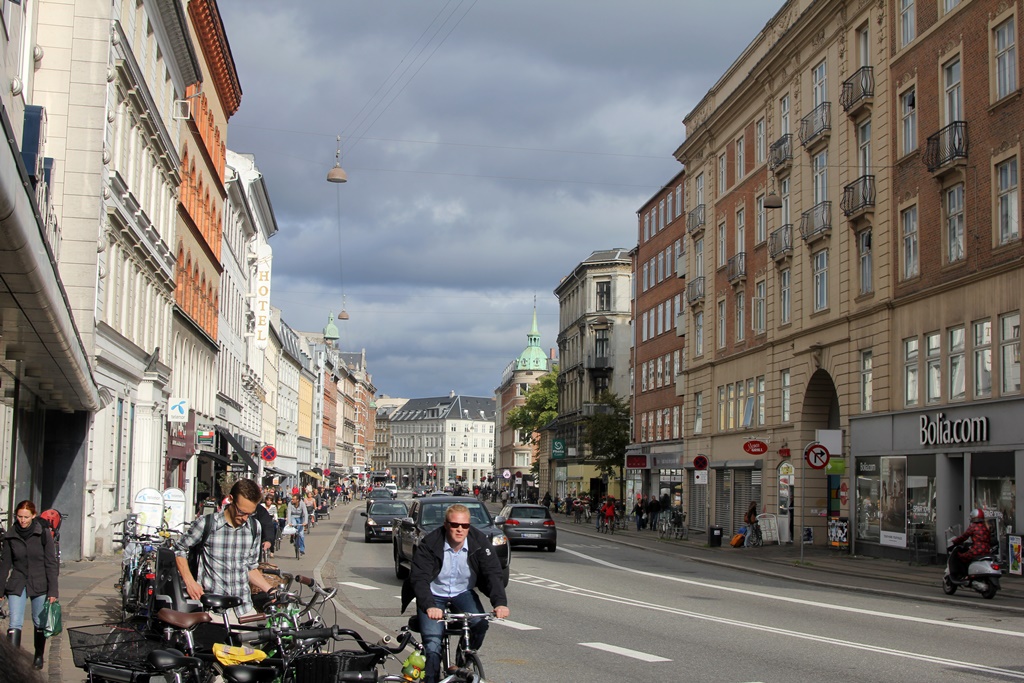
Vesterbrogade
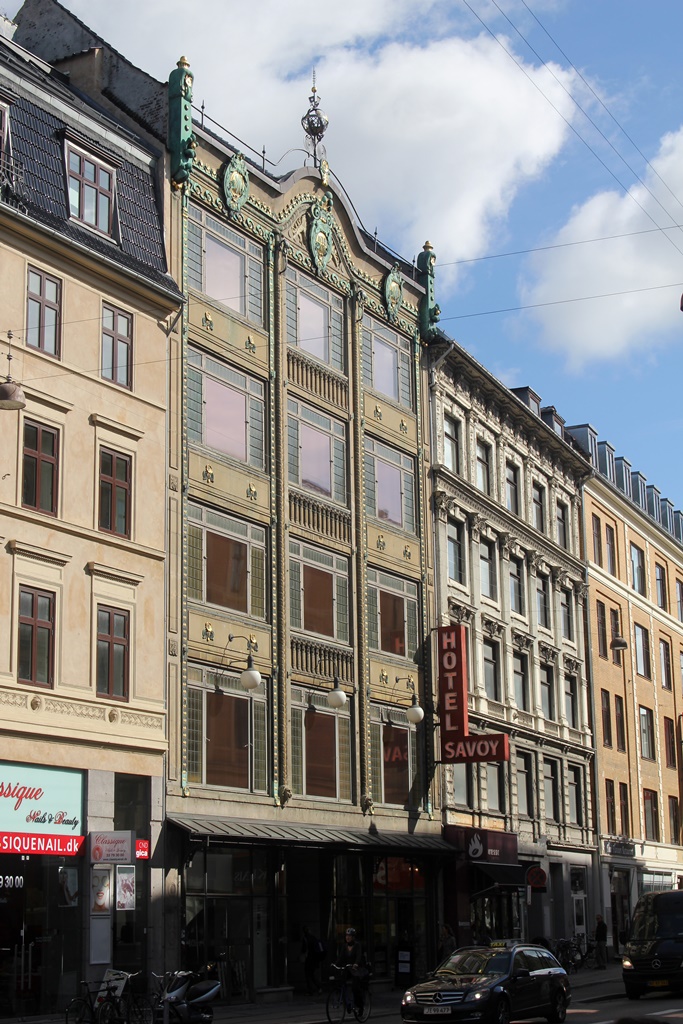
The Savoy Hotel
We checked into our room on the top floor, which had goofy slanted walls, and ate dinner at a Thai restaurant next door to
the hotel.
Danish Thai Food
The food was pretty good, and fortunately they took credit cards, as we didn’t have any Danish currency yet. The Danish
unit of currency is called the Krone (Denmark is in the EU, but has maybe wisely stayed out of the Eurozone), and at the
time was worth about 19¢ in U.S. money.
After dinner we continued down Vesterbrogade in search of an ATM and looked at some of the nearby scenery.
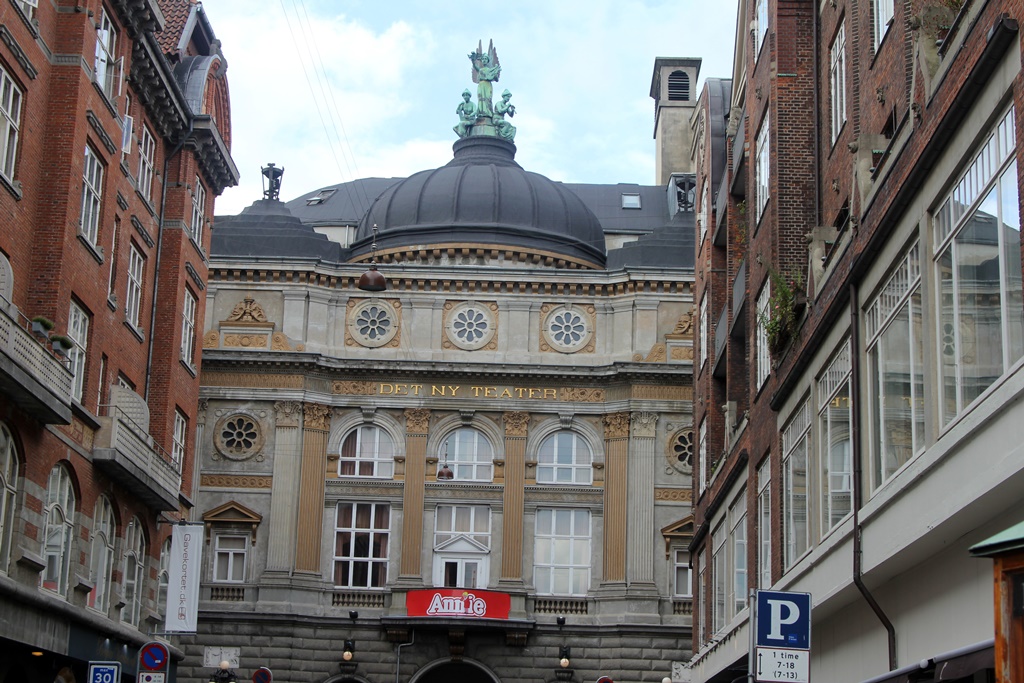
Det Ny Teater
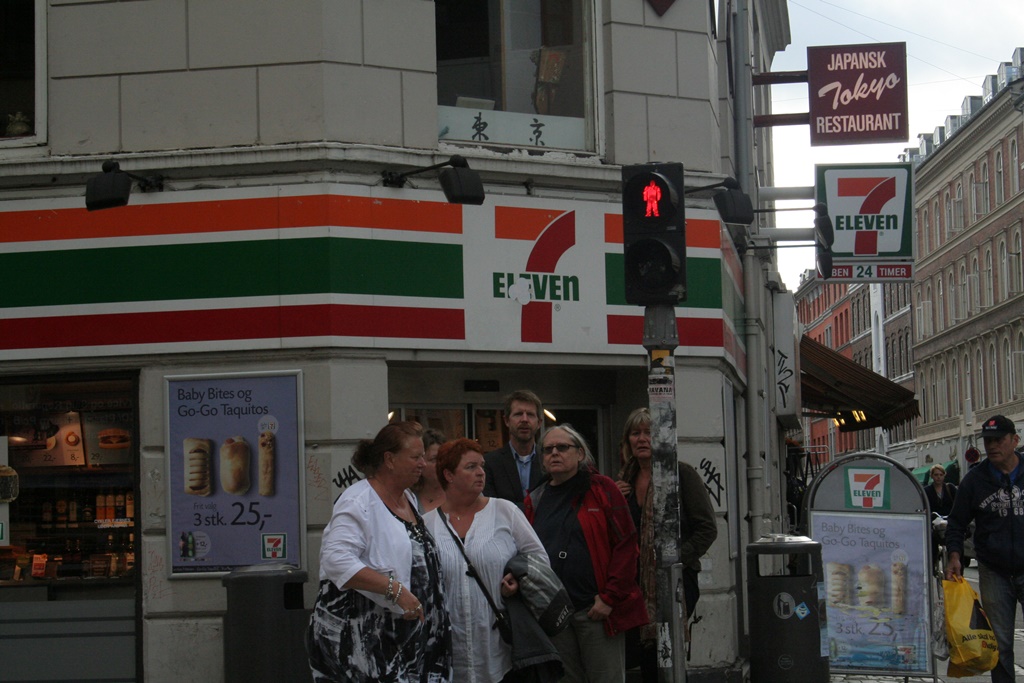
7-Eleven Store
Elias Church
We found a festively decorated elephant in the process, and were to find several others scattered around the city
during our stay (one of those social services no doubt).
Nella and Bob and "Love Garden" Elephant
At one point we saw a grassy area with a model village spread across it. On closer examination we found the village
to be a 1530 version of Copenhagen and the grassy area to be the front lawn of the
Museum of Copenhagen, which by this hour
was closed for the day.
Vesterbrogade and Copenhagen Model

1530 Copenhagen

1530 Copenhagen (detail)
From here we found an ATM, withdrew some Krones and returned to the hotel to deal with our jet lag and try to
rest up for the next day. Our plan was to start out with a visit to a nearby museum, the Ny Carlsberg
Glyptotek.

